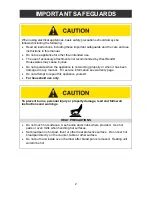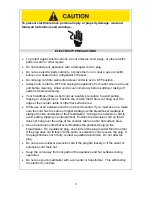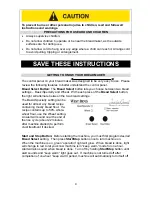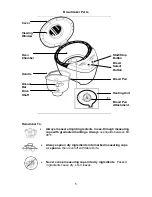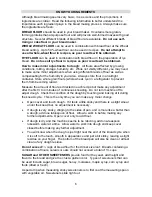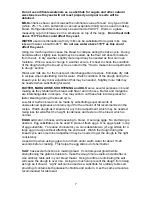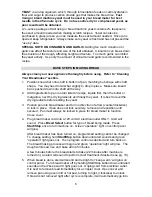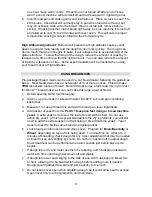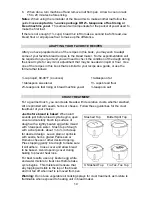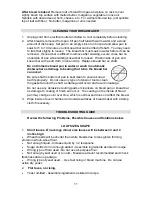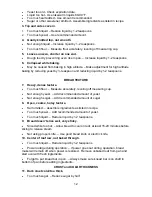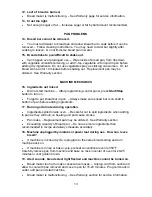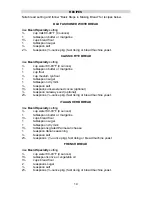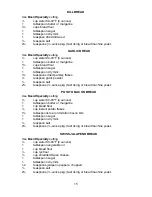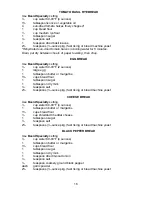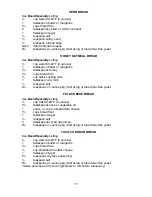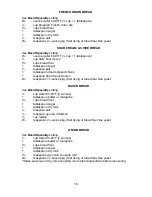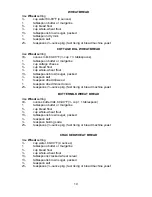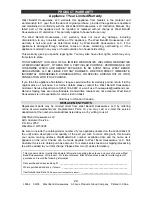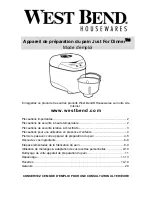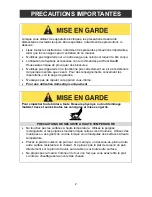
7
Do not use artifical sweeteners as a substitute for sugars and other natural
sweeteners as the yeast will not react properly and poor results will be
obtained.
MILK
enhances flavor and increases the nutritional value of bread. Any type of milk
(whole, 2%, 1%, skim, buttermilk or canned evaporated milk) can be used in making
bread. Refrigerated mik must always be warmed to 80-90°F. Warm in a glass-
measuring cup in microwave or in a small pan on top of the range.
Do not heat milk
above 110°F as this could affect the yeast.
WATER
used in combination with dry milk can be substituted for regular milk. Use
lukewarm water, about 80-90°F.
Do not use water above 110°F as this could
affect the yeast.
Using too much liquid can cause the bread to collapse during the bake cycle. During
humid weather, slightly less liquid may be needed, as the flour will absorb moisture
from the air. In dry weather, slightly more liquid may be needed as flour can lose
moisture. When a severe change in weather occurs, it is best to check the condition
of the dough during the knead cycle as noted in the “How to make minor adjustments
to dough” section.
Water and milk are, for the most part, interchangeable in recipes. Eliminate dry milk
in recipes when substituting milk for water. Watch condition of the dough during the
knead cycle for any minor adjustment that may be needed. Slightly more milk may
be needed when substituting for water.
BUTTER, MARGARINE, SHORTENING and OILS
serve several purposes in bread
making as they tenderize the bread, add flavor and richness. Butter and margarine
are interchangeable in recipes. You may wish to cut these fats into two pieces for
faster blending during the knead cycle.
Low-fat or fat-free bread can be made by substituting equal amounts of
unsweetened applesauce or plain yogurt for the amount of fat recommended in the
recipe. Watch dough as it kneads for any minor adjustment, which may be needed.
Using less fat will affect the height, tenderness and texture of the bread, which is
normal.
EGGS
add color, richness and leavening to bread. Use large eggs. No premixing is
needed. Egg substitutes can be used in place of fresh eggs. One egg equals ¼ cup
of egg substitute. To reduce cholesterol, you can substitute two (2) egg whites for a
large egg in recipe without affecting the end result. Watch the dough during the
knead cycle as some minor adjustment may be needed to get the dough to the right
consistency.
A special tip when using eggs is to run them under warm water for about 10-20
seconds before cracking. This helps the egg slide out of shell better.
SALT
has several functions in making bread. It controls yeast growth while
strengthening the gluten structure to make the dough more elastic and adds flavor.
Use ordinary table salt in your bread maker. Using too little or eliminating the salt
will cause the dough to over rise. Using too much can prevent the dough from rising
as high as it should. “Light” salt can be used as a substitute for ordinary table salt,
providing it contains both potassium chloride and sodium. Use the same amount as
recommended for table salt.


